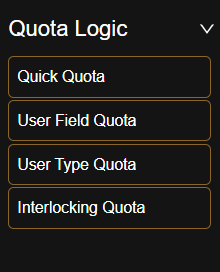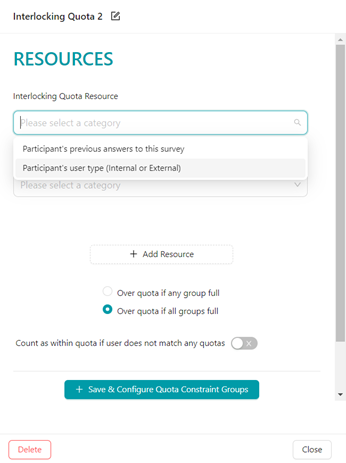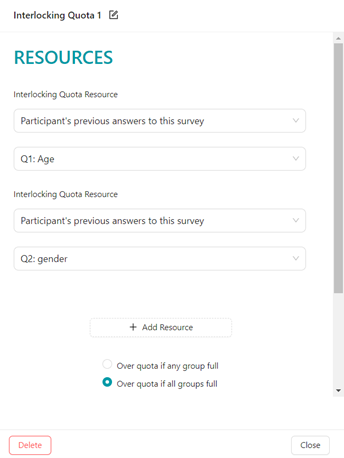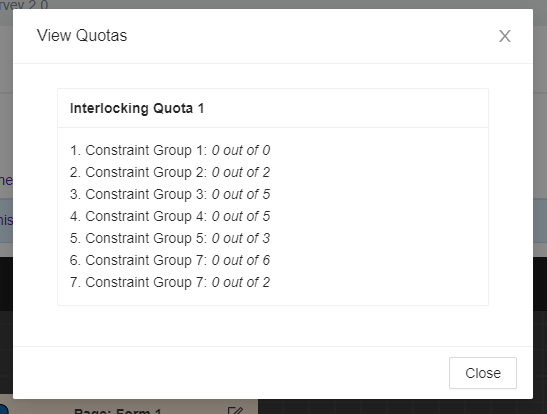Using Interlocking quotas
Interlocking Quotas allow participants to be tracked and directed through a survey based on multiple criteria.
Interlocking quotas allow you to count and limit the number of responses collected from a particular group, for example when using a survey to recruit participants either for a particular piece of qualitative research, where you might want to recruit a selection of respondents who make up a particular demographic, or during recruitment if you require a large sample of members but who are representative of your customer base.
Adding interlocking quotas:
First, drag in an ‘Interlocking Quota’ node from the quota logic menu and drop this on the canvas before the question you want to limit responses to.
Important note:
- All quotas need to be added when your survey is in ‘upcoming’ and cannot be added to a live survey.

Once on the canvas, click the edit icon in the top right-hand corner of the logic box. You will then be presented with the following screen:

A resource can either be a question in the survey, or based on what type of participant the user is (external or internal). In the example below we want to set a quota based on the user’s previous answers and limit the number of responses from females aged 18-24 years old. We have selected the previous survey questions relating to Age and Gender as the two interlocking quota resources. To use an interlocking quota you need to include a minimum of two resources, but you can add more than that by clicking the ‘+ Add Resource’ button.

After adding all your resources, select the ‘+ Save & Configure Constraint Groups’ button.
You then need to set up each Quota Constraint Group. This specifies who should be considered a match for each quota group and how many of that group you want to let through.
Important note:
- If more than one value is added to a constraint box, it works as an ‘or’, for example, adding ‘18-24’ plus ‘25-34’ in constraint 1 and ‘Female’ in constraint 2 would class females aged 18-24 AND Females aged 25-34 as both matching that constraint.
Multiple constraint groups can be added, and each given a quota. Once complete, select ‘Submit’.

You will then be taken back to the Resources form. Here you can specify how you want the quota to perform if someone matches more than one of your constraint groups.

- Over quota if any group full = If the participant matches the specification of any of your quota constraint groups which is full they will follow the over quota route.
- Over quota if all groups full = If the participant matches the specification of one of the quota constraint groups which is full, they will then be ‘checked’ against the other groups you have set and only classed as over quota if all the groups they match are full.
- You can also specify what happens if the user matches none of the quotas - should they be considered Under Quota (and allowed to continue, depending on how your survey is configured) or Over Quota (and likely routed out). The default is to consider them as Under Quota if they don’t match any of the quotas.
Once complete, the form can be closed.
Monitoring Interlocking quotas
When your survey is live, you’ll be able to monitor progress against each constraint group from the View Quota form.
Important note:
- You can adjust the quotas in a live survey should you wish to collect more or fewer responses from a quota constraint group.
